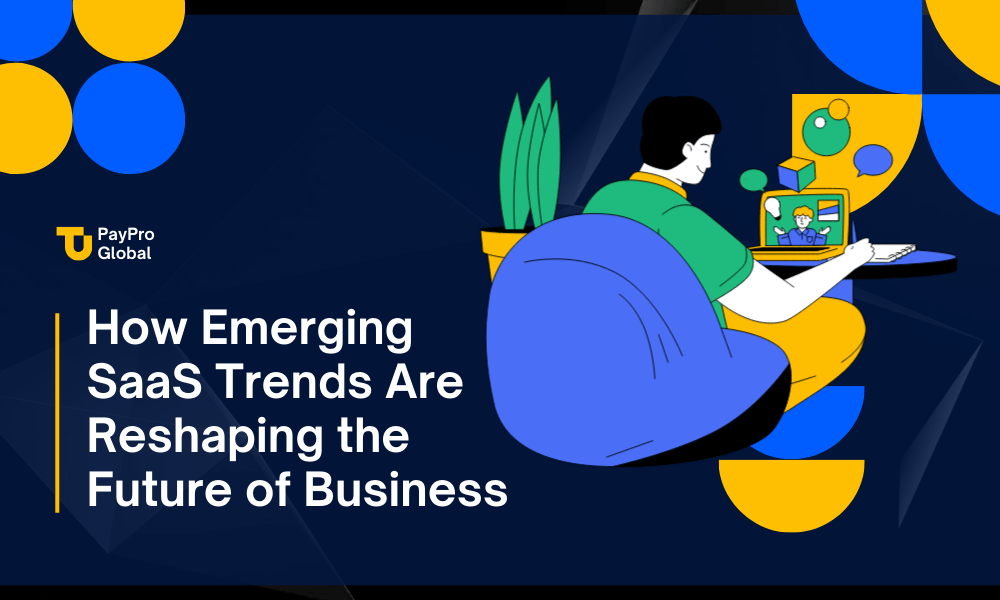After a shaky start, the state of SaaS (Software as a Service) is finally looking up. 2023 had more lows than highs for an industry still reeling from post-pandemic blues.
Crunchbase News says following a year of cutbacks and slowdowns, data shows that the market is hitting back. Thanks to revenue growth and slower churning rates, businesses are adapting to their new normal.
The B2B sector also has reason to celebrate. According to a payments infrastructure provider, B2B SaaS saw massive growth in the form of new sales activity and a 17.5% spike in subscription upgrades.
All of the above bodes well for SaaS businesses. The good news is that emerging SaaS trends are set to dominate a reset market.
Below, we’ll discuss those trends and how they’ll reshape the future of business.
Cutting-Edge AI
Despite a lackluster 2023, investors are still putting their money on AI. TechRadar notes that AI-led businesses are gaining the most financial backing because of the ease of access.
Cutting-edge AI technology is becoming more accessible, giving any business the power to implement it into their current systems without completely overhauling their IT infrastructure.
AI functionality doesn’t stop there. More and more companies are leveraging AI platforms to generate revenue and add value for customers.
AI tools can take the complication out of global payments for SaaS companies when they accept payments for digital goods, says PayPro Global. By integrating an all-in-one payment system, international tax, compliance and transactions are simplified.
Automation
Automation and AI generally complement each other. It’s no surprise that AI-driven automation is a top-performing trend and preferred when dealing with eCommerce solutions.
SaaS market leaders leverage these tools to take the tedious work out of admin-heavy tasks. Analytics Insights predicts that emerging technology will become the go-to solution for companies wanting to automate monotonous functions.
Soon, activities such as data entry, customer support and marketing campaigns will be automated.
Reducing Expenditure
Software experts refer to it as “managing burn.” When the SaaS sector emerged in the early 2000s, investors and founders threw money at tech startups like there was no tomorrow.
The booming landscape showed investor confidence and the promise of massive payouts. This led to high spending and rapid expansion.
SaaS companies have had to move away from that business model for the sake of financial health and to keep their firms afloat. Startups are now forced to find new ways to stabilize expenditures while making a profit.
Modern software companies are implementing tools to increase productivity and scalability as a way to manage burn. Modern software development companies are implementing tools to increase productivity and scalability as a way to manage burn.
Usage-Based Pricing (UBP)
Usage-based pricing (UBP) is quickly gaining momentum in the subscription management field.
Citing a usage-based pricing report, CustomerThink says about 61% of SaaS providers were actively moving to the platform.
It’s an appealing concept. Offering flexibility and exact billing, UBP only charges customers for what they use. Transparency is proving an attractive draw for consumers and companies, resulting in increased revenue streams.
But, the publication says the tool hasn’t come without teething problems. Since revenue depends on service usage, businesses using this model must prioritize strong customer support.
What’s the workaround? Software developers believe AI and post-sales customer experience are essential for customer support teams.
Product-Led Growth
Adopting product-led growth (PLG) strategies is essential for many companies. This approach allows your product to drive customer acquisition effectively.
Companies employing PLG can reach their market more directly and cost-effectively than through sales-driven outreach.
Built In says the PLG model is a profitable choice for SaaS startups. Additionally, Gartner predicts that 75% of SaaS service providers will implement PLG techniques into their expansion plans by 2025.
Incorporating PLG strategies is as easy as offering free trials, self-serve capabilities, and freemium models.
Data as a Service (DaaS)
Data drives business growth on many levels. It plays a crucial role in SaaS analytics, so it’s only natural that companies would gravitate towards DaaS.
There are setbacks. Collecting and storing data are time-consuming and costly. The security issues are just as questionable.
The term refers to cloud-based software for data management to collect, store, and analyze data. That’s why DaaS is said to be one of the biggest trends we’ll be seeing more of in the coming months.
It’s opened the door for companies to provide DaaS as a service to improve the quality of data and save on costs.
Euro Weekly News expects smaller companies to develop DaaS solutions to even the playing field with larger names like Google and IBM.
The future looks bright as emerging SaaS trends dominate the landscape. Chances are they’ll reshape how companies do business and enable smaller startups to gain more ground.





Leave A Comment
You must be logged in to post a comment.